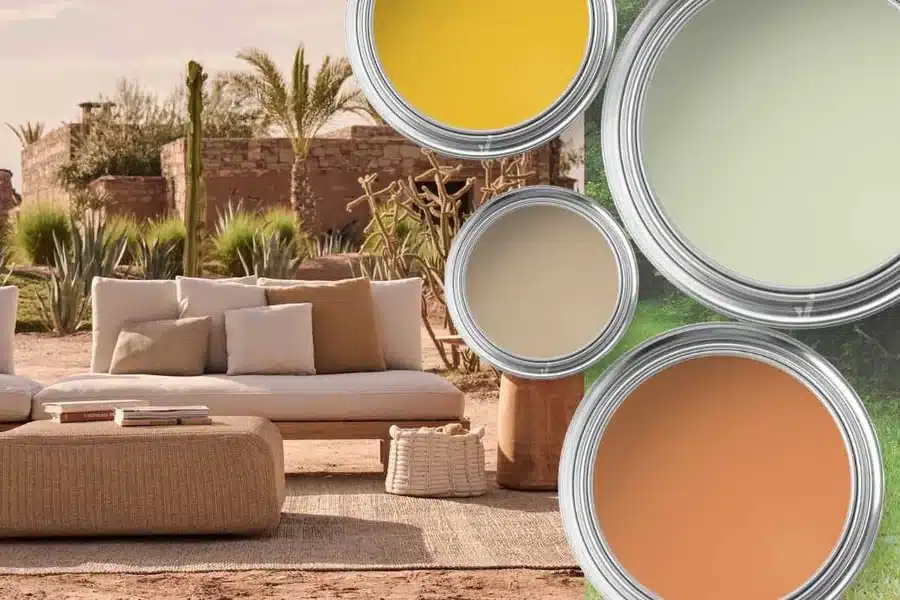The Do’s and Don’ts of Exterior Painting in Summer Heat

As you embark on your summer exterior painting project, understanding the nuances of working in high temperatures is crucial. The summer heat can pose challenges that could impact the quality and longevity of your work. With the proper knowledge and preparation, you can navigate these challenges effectively. When looking for a Bella Vista painting location, this article will guide you through the essential dos and don’ts of exterior painting in summer, helping you achieve professional results while safeguarding your efforts from weather-induced pitfalls.
Why Summer Heat Affects Exterior Painting
The Impact of Temperature on Paint
The summer heat significantly impacts the performance of exterior paint. High temperatures can cause the paint to dry too quickly, leading to less-than-ideal surface adhesion. This rapid drying often results in a patchy, uneven finish, as the paint may not have enough time to smooth out over the surface.
Effects of Direct Sunlight
Direct sunlight exacerbates the issue. When surfaces are overheated, paint can blister and peel, compromising the longevity of the finish. Painting in the sun’s intensity can also make it challenging to maintain a wet edge, leading to visible seams.
Humidity Levels and Paint Application
Humidity is another critical factor. While low humidity allows for faster drying, too much moisture in the air can encourage mildew growth beneath the paint. Balancing these elements is crucial to achieving a durable, aesthetically pleasing exterior paint job.
Do: Choose the Right Time of Day for Painting
Early Morning Advantages
When painting the exterior of your home during the sweltering summer months, early mornings emerge as the optimal choice. The sun is less intense, reducing the risk of paint drying too quickly, leading to unsightly brush marks and an uneven finish. Morning dew usually evaporates by this time, ensuring a clean, dry surface for your project.
Late Afternoon Considerations
Alternatively, late afternoon offers another window of opportunity. As the sun begins to wane, temperatures often drop, providing a more comfortable environment for the painter and the paint. However, ensuring ample daylight is crucial to completing your work safely and effectively. Avoid painting too late to prevent the risk of dew settling on fresh paint, which can compromise the quality.
Don’t: Ignore the Importance of Surface Preparation
Understanding Surface Preparation
Surface preparation is paramount before you pick up a paintbrush. The longevity and appearance of your paint job depend heavily on how well you prepare the exterior surfaces. Neglecting this crucial step can lead to peeling, cracking, and an uneven finish, ultimately wasting time and resources.
Cleaning and Repairing
Start with a thorough cleaning to remove dirt, mold, and mildew, which can prevent the paint from adhering correctly. Use a power washer or a cleaning solution for stubborn residues. Once clean, inspect for damage such as cracks or loose siding. These imperfections should be repaired to ensure a smooth surface. Fill in any cracks with a high-quality filler, and sand down rough areas to create an even canvas for painting.
Priming is Key
Applying a primer is not just an optional step; it’s essential. Primer improves paint adhesion and provides a uniform base, especially on porous or previously painted surfaces. It also helps to block stains and offers added protection against the elements. Choose a primer compatible with your chosen paint and apply it according to the manufacturer’s instructions for the best results.
Do: Use High-Quality, Heat-Resistant Paint
The Importance of Quality Paint
When exterior painting in summer heat, selecting high-quality, heat-resistant paint is crucial. Not all paints are created equal, and using a premium product ensures that your work withstands the harsh elements. Heat-resistant paint is designed to cope with high temperatures, preventing blistering, peeling, or fading.
Benefits of Heat-Resistant Paint
Durability is a key advantage. High-quality paints offer superior adhesion and flexibility, ensuring the coating stays intact even as surfaces expand and contract with temperature fluctuations. Additionally, these paints often include UV protection, shielding your surfaces from the sun’s harmful rays and preserving the vibrancy of colors.
Choosing the Right Paint
Selecting the right paint involves considering the surface material and environmental conditions. Consult with paint specialists to choose products that meet your needs, ensuring longevity and aesthetic appeal. Remember, investing in quality paint now saves money and effort.
Don’t: Rush the Drying Process in Hot Weather
Understand the Importance of Drying Time
In the sweltering summer heat, expediting the exterior painting process is tempting, but patience is key. Proper drying time is essential to ensure a smooth, long-lasting finish. The intense heat may cause the paint to dry too quickly on the surface, leaving the underlying layers tacky and prone to damage.
Risks of Rushing
Rushing the drying process can lead to several issues:
Blistering and Peeling: Quick drying can trap moisture, causing the paint to blister and peel over time.
Uneven Texture: Hastily dried paint may have an uneven finish, affecting the aesthetic appeal.
Final Thoughts
In navigating the nuances of exterior painting during the summer heat, you are now equipped with the essential dos and don’ts to ensure a successful project. Whether looking for a Bella Vista painting location, you can achieve a durable and aesthetically pleasing result by choosing the right time of day, using high-quality materials, and paying attention to weather conditions. Avoiding common pitfalls, such as painting in direct sunlight or high humidity, will further protect your investment.
